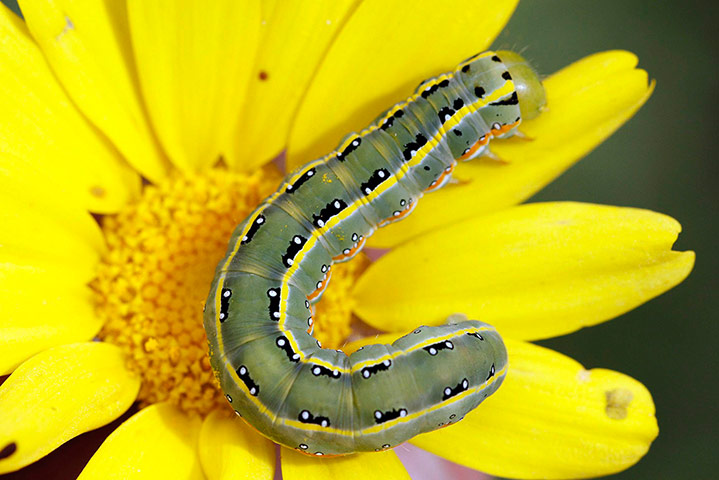TOP STORIES
8 bald eagles die of disease linked to weed
At least eight bald eagles died at Thurmond Lake during the winter and early spring because of an algae-borne neurotoxin linked to the invasive weed hydrilla.
... Ken Boyd, a conservation biologist with the Army Corps of Engineers, said low water levels and unseasonably warm temperatures may have hastened the growth of hydrilla and made existing mats of the invasive weed more accessible to feeding birds.
The eight eagle deaths confirmed at the reservoir this season are down slightly from the previous season, when 11 eagles died.
The Augusta Chronicle - chronicle.augusta.com
18 Aug 2012
R Pavey
Location: Thurmond Lake, Georgia, USA - Map It 

Geese May Be Helping to Spread Frog-Killing Chytrid Fungus
The frog-killing fungus Batrachochytrium dendrobatidis (Bd), which causes the disease chytridiomycosis, has been blamed for about 100 amphibian extinctions around the globe since it was first observed in 1998, but clear information on exactly how it spreads has remained a mystery.
Now a team of scientists working in Belgium have come up with one potential clue: the chytrid fungus may sometimes be carried to new habitats on the toes of waterfowl such as geese.
According to research published April 13 in the journal PLoS One, geese are “potential environmental reservoirs” for the Bd fungus, because waterfowl and amphibians often co-occur in the same habitats. The team studied 497 wild geese—which had been rounded up from six wildlife areas in East Flanders as part of an invasive species eradication program—and found that the keratinous toe scales of 76 of the birds tested positive for Bd. The fungus was present on both species of geese that they tested: invasive Canada geese (Branta Canadensis) and domesticated geese (Anser anser domesticus) that had been living in the wild.
Scientific American - blogs.scientificamerican.com
19 Apr 2012
JR Platt
Photo courtesy of Scientific American
Green-glowing fish provides new insights into health impacts of pollution
Understanding the damage that pollution causes to both wildlife and human health is set to become much easier thanks to a new green-glowing zebrafish.
Created by a team from the University of Exeter, the fish makes it easier than ever before to see where in the body environmental chemicals act and how they affect health. The fluorescent fish has shown that oestrogenic chemicals, which are already linked to reproductive problems, impact on more parts of the body than previously thought.
The research by the University of Exeter and UCL (University College London) is published in the journal Environmental Health Perspectives.
Numerous studies have linked ‘endocrine-disrupting’ chemicals, used in a wide range of industrial products and contraceptive pharmaceuticals, to reproductive problems in wildlife and humans. Previous University of Exeter research identified the potential for a major group of ‘these chemicals to cause male fish to change gender. Human exposure to these chemicals, which can alter hormone signalling in the body, has been associated with decreases in sperm count and other health problems, including breast and testicular cancer.
University of Exeter - www.exeter.ac.uk
More News about the Effects of Pollution
Killer whales facing an airborne threat
New research shows that killer whales are inhaling bacteria, fungi and viruses once believed to be found only on land. Some of the pathogens are highly virulent. And some are even antibiotic-resistant.
The scientists followed the killer whales by boat, trying to catch the precise moment the animals broke the surface.
Then, using a 25-foot pole strung with petri dishes, researchers leaned out and gathered samples of the moist exhaled air that shot like a geyser from each whale's blowhole.
For four years a team of researchers gathered these orca breath samples from the waters of Washington and British Columbia. And by comparing them to surface waters and orca death records, the scientists stumbled upon a trend.
The Seattle Times - seattletimes.nwsource.com
19 Apr 2012
C Welch
Bat populations rebound in NY caves first struck by deadly white-nose syndrome
Researchers found substantially more bats in several caves that were the first ones struck by white-nose syndrome, giving them a glimmer of hope amid a scourge that has killed millions of bats in North America.
Figures released Thursday by the state Department of Environmental Conservation showed notable increases in the number of little brown bats in three out of five upstate New York hibernation caves where scientists first noticed white nose decimating winter bat populations six years ago. The largest cave saw an increase from 1,496 little browns last year to 2,402 this winter.
The Washington Post - www.washingtonpost.com
19 Apr 2012
Location: New York, USA
Other Wildlife Health Related News

- Independent report into Gladstone Harbour fish disease blames dredging, port construction [Australia]
- Mojave Desert kit foxes struck by virus [California, USA]
- More emaciated elephant seal pups showing up at Marine Mammal Center [California, USA]
It's Not All Bad News






